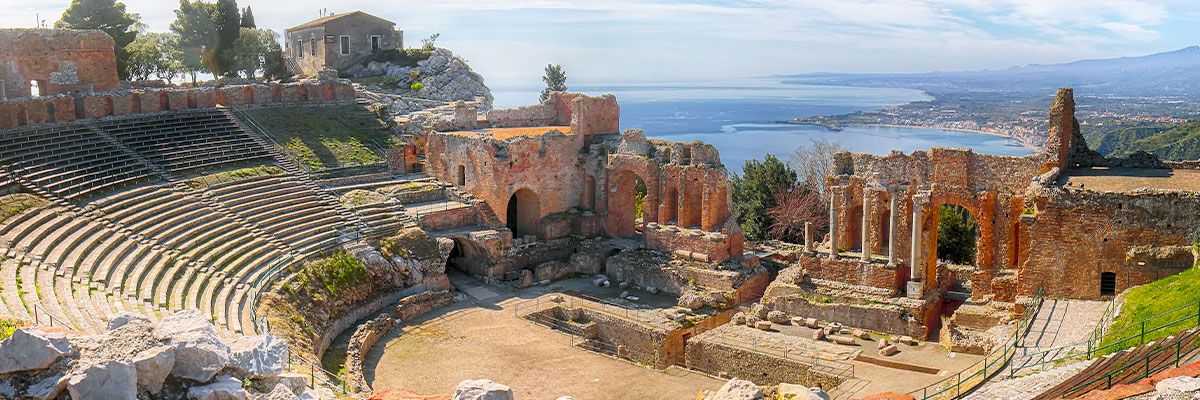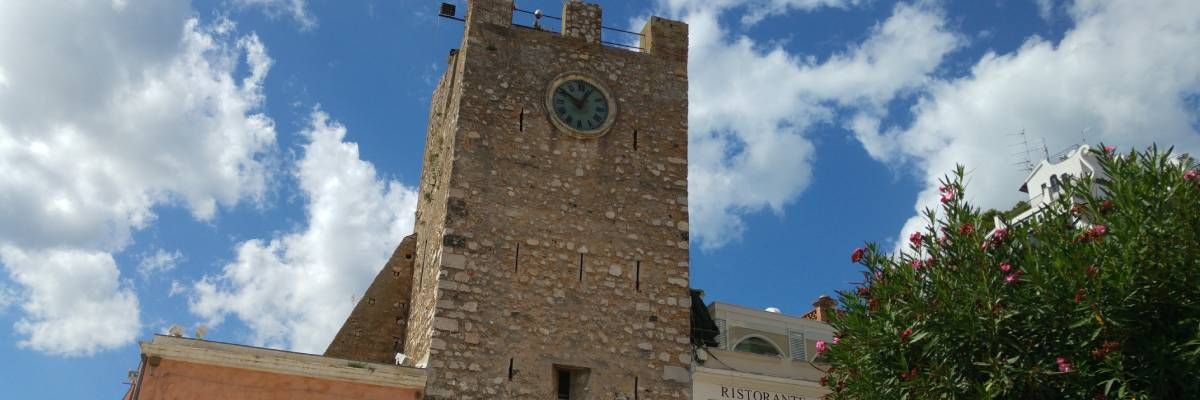Palazzo Corvaja in Taormina

The first part of this medieval palace was built in the 10th century, when Arabs conquered the city from Byzantine Imperium. It was a cube-shaped tower that was used for defending the town.
The tower was extended in the 13rd and 14th century assuming the current characteristic mix of styles: Arabic (the tower), Norman (the fifteenth-century hall where the Parliamentary meeting were held), and Gothic (the shape of the façade windows).
In 1411 the building housed the Sicilian Parliament that chose the King, in the presence of Queen Bianca of Navarra, regent of the Kingdom of Sicily.
The mansion is named after the Corvaja family, one of the oldest and most noble families in Taormina. This powerful aristocratic family owned the palace from mid-16th through mid-20th centuries giving it its final shape.
On the South-West side there is the entrance portal with a staircase that goes from the courtyard to the first floor. On the landing there are three magnificent panels in Siracusa stone scuplted in high-relief: the first one pictures the creation of Eve; the second panel, the originai sin; and the third is of the expulsion of Adam and Eve from Paradise.
The 15th century hall, where the Sicilian Parliament meetings were held, is all in Norman style. On the left there is a small room with fine frescos. At the center is represented Daniel in the lions' den. On the South-West side is the fresco of the Mother of the Maccabees, on the South-East side the Ahasuerus and Esther with the scaffold prepared by Aman for Mardoche, while on the northeast side the flight into Egypt.
Palazzo Corvaja was in a pitiful state of total neglect with several families living there at the one time until the end of the Second World War in 1945. That same year the first mayor of Taormina had the building dispossessed and Armando Dillon, a Neapolitan architect, restored it all from 1945 until 1948.
Today, the Corvaja Palace houses the tourist office and the Museo di Arte e Tradizioni Popolari, which has a collection of Sicilian puppets and folk art and carts.
Related articles
Greek Theatre

Clock Tower

Trevelyan's Park - Public gardens


 English
English  Italiano
Italiano